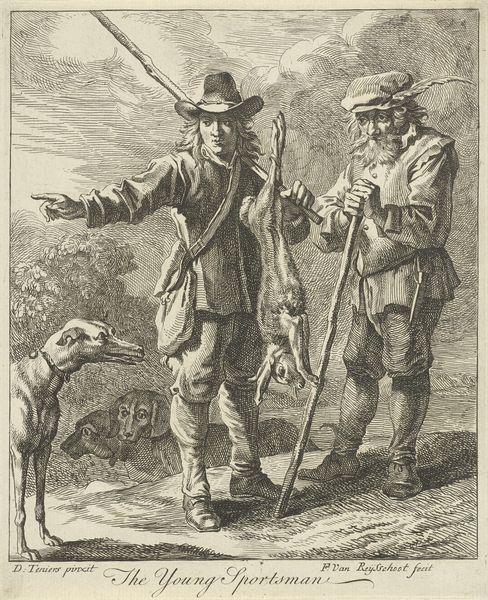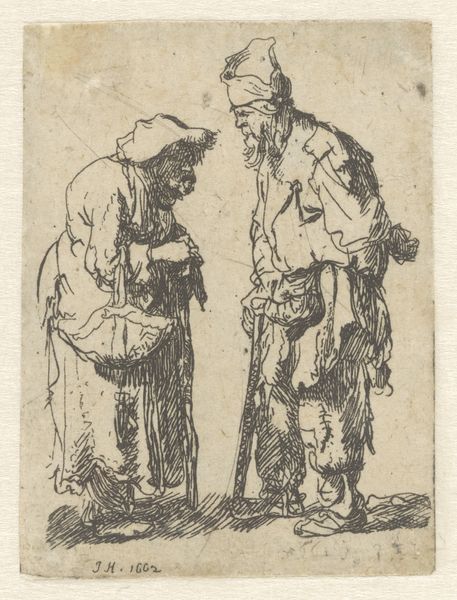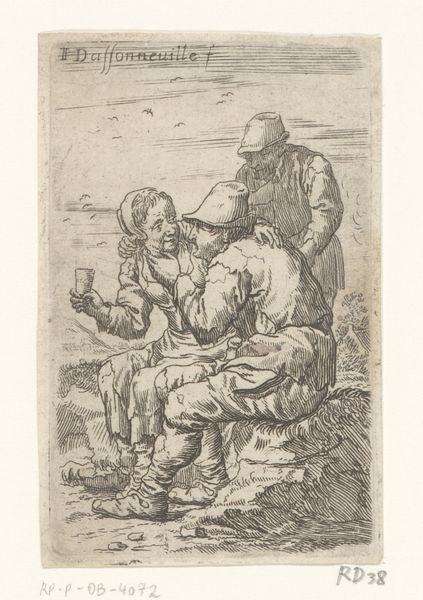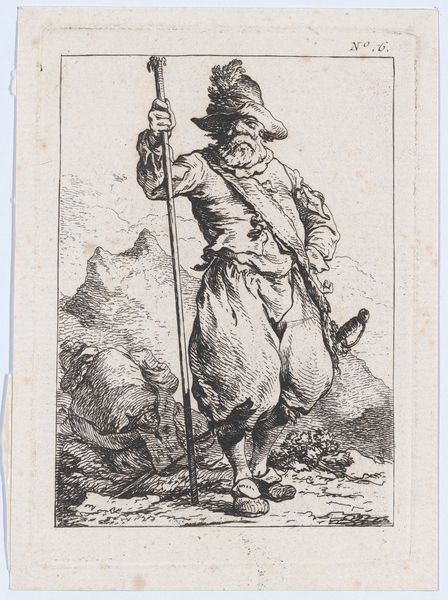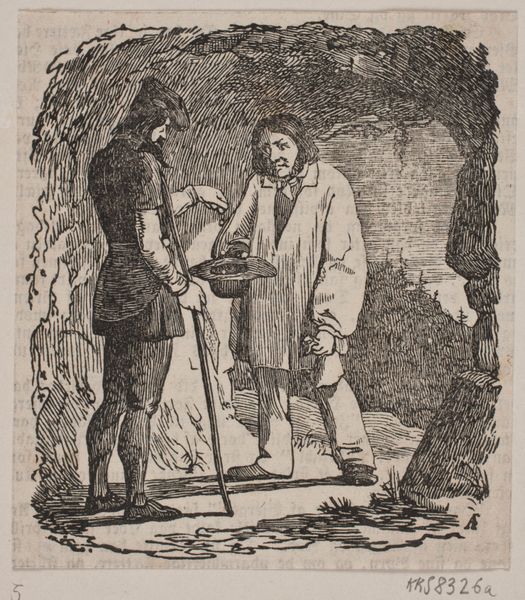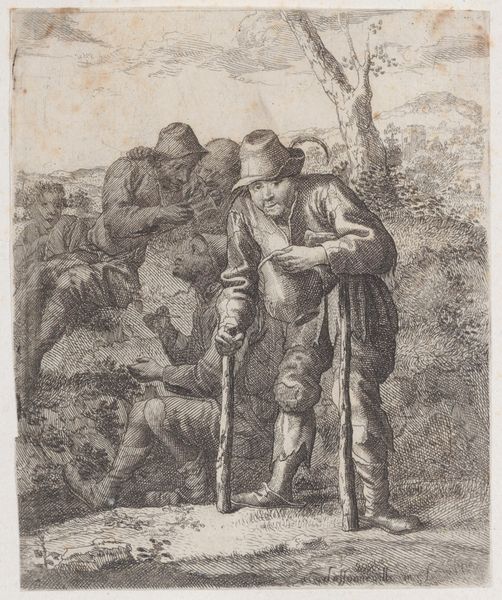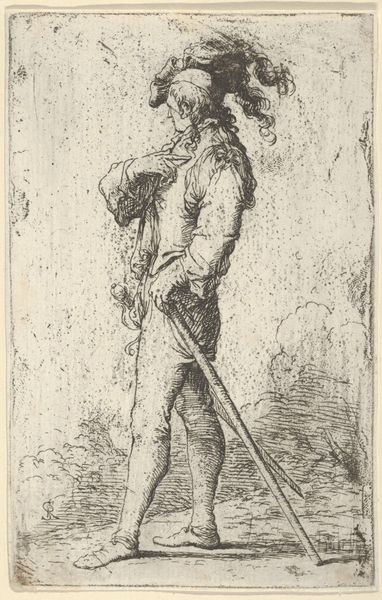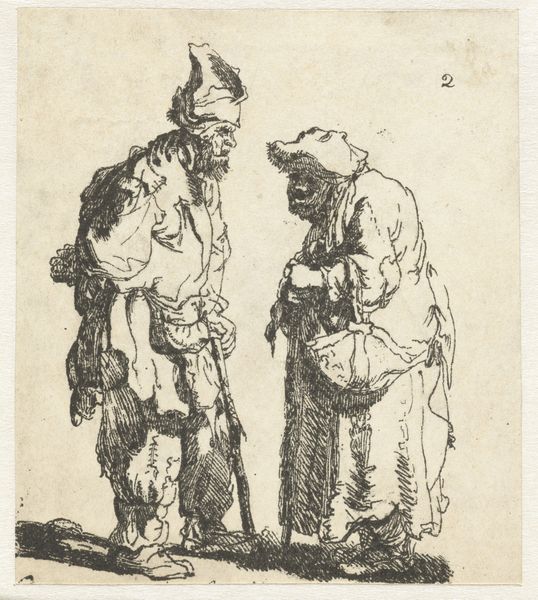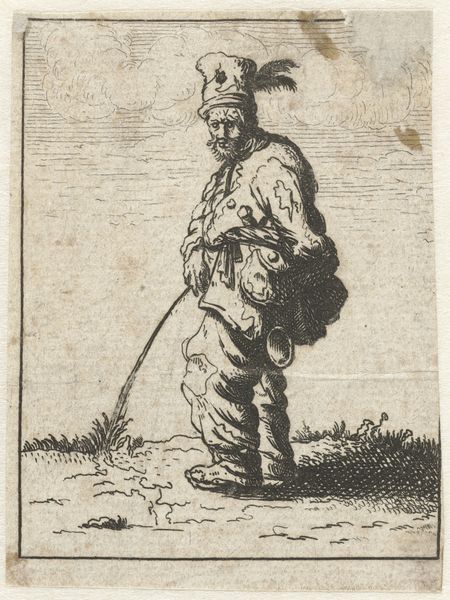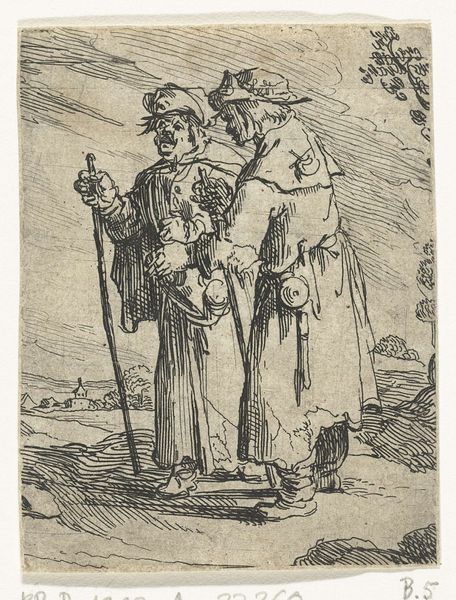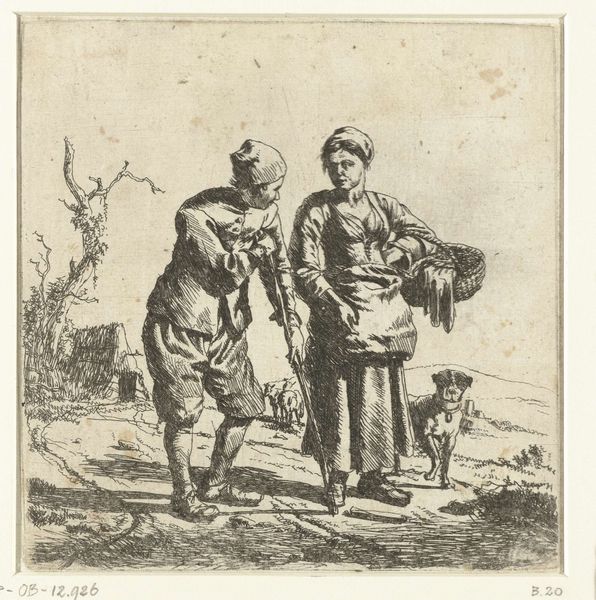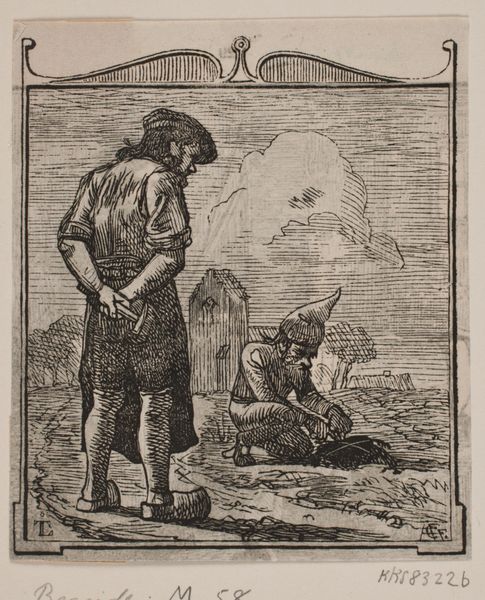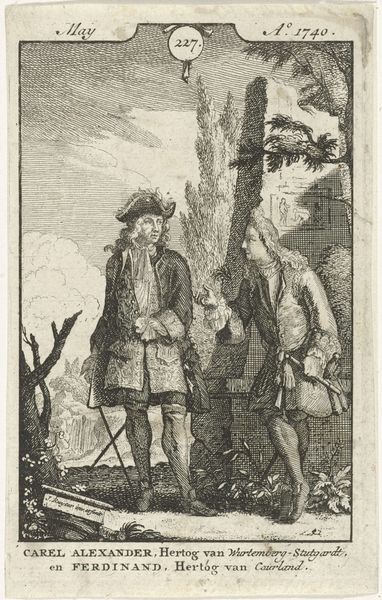
drawing, ink, engraving
#
portrait
#
drawing
#
baroque
#
pen illustration
#
pen sketch
#
figuration
#
ink
#
genre-painting
#
history-painting
#
engraving
#
realism
Dimensions: height 284 mm, width 205 mm
Copyright: Rijks Museum: Open Domain
Ludwig Büsinck made this engraving of two beggars and a child with leprosy in the early 17th century. This image reflects early modern Europe's complex relationship with poverty and disease. The figures are rendered with a stark realism that invites a certain social critique. The beggars’ tattered clothes and weary expressions speak to the harsh realities of life for the poor. The child's visible signs of leprosy, a disease often associated with moral corruption at the time, add a layer of social stigma. Prints like these circulated widely, and their meaning depended on the complex interplay of religious belief, economic conditions and social policy. To truly understand this work, we need to consider these factors. We might look at parish records, medical treatises, and even sermons from the period. Only then can we appreciate how Büsinck's image participates in a broader conversation about poverty, disease, and social responsibility in his time.
Comments
No comments
Be the first to comment and join the conversation on the ultimate creative platform.
